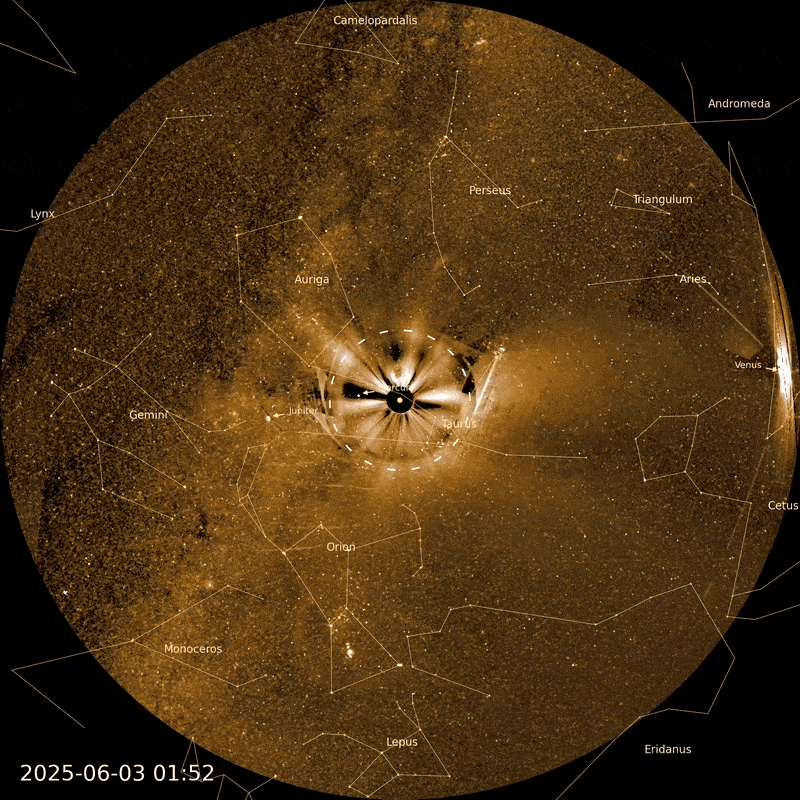The EmDrive, NASA’s ‘Impossible’ Space Engine, Really Is Impossible

Many tests have reported an ‘anomalous thrust’ where there should be none. A researcher has finally shown where everyone else has messed up.
One of the ultimate dreams of humans everywhere is limitless, free energy. It’s the ability to do the impossible: to pull power out of empty space itself; to create a device that spins faster-and-faster without an energy source; to accelerate a rocket without any fuel or propellant. Yet the laws of physics have always stood in the way.
A few years ago, a few renegade inventors emerged with another incarnation of this idea, in the form of a device called an EmDrive. This electromagnetic cavity claimed to be an engine that required no fuel and emitted no exhaust. It simply required input power, and could convert that energy into thrust. This would violate the laws of physics, but the experiments seemed to indicate that it worked.
Until now, when a team led by Martin Tajmar has exposed what’s really going on behind-the-scenes. This purported “impossible” space engine, as it turns out, really is too good to be true.

Every action has an equal, opposite reaction. It’s one of the most fundamental laws of physics, first put forth by Newton more than 300 years ago. Every experiment we’ve ever done has validated this rule; every measurement made has been consistent with it. Every time one object exerts a force on another, it means there’s an equal and opposite force exerted by the second object on the first. Every time one object changes its momentum in the Universe, there must be another that changes its momentum by an equal and opposite amount.

The very idea that you can have a “reactionless drive” is the equivalent of a perpetual motion machine: something that clearly violates the known laws of physics. An action without an equal and opposite reaction — or, as their proponents sometimes claim, without any reaction at all — would overturn a huge amount of what we know about the Universe. Yet that has never deterred some people from trying, as attempted patents on devices that break the laws of physics are put forth all the time. Many sub-fields of science are rife with tinkerers, inventors, and fringe scientists attempting to do the impossible. The EmDrive is the latest craze in a long line of these claims.
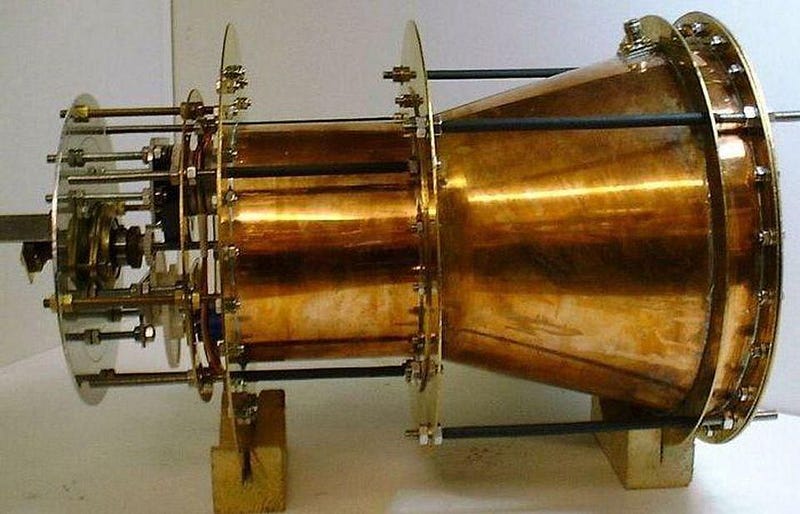
A few years ago, an inventor named Roger Shawyer claimed to have invented a working prototype of exactly such a reactionless engine. The EmDrive, short for electromagnetic drive, claimed that by setting up a resonant cavity filled with photons, where one end of the cavity was narrower than the other, you would produce a net thrust, even without any exhaust. According to Shawyer and others, these devices did, indeed, produce a small but nonzero thrust, without any detectable form of exhaust.
Although there were many believers, the default scientific response is to be skeptical. Laws of physics are not so easily broken, and laws that have been well established under a wide variety of tests and conditions are even more difficult to break. When the OPERA collaboration claimed to detect faster-than-light neutrinos at the beginning of the decade, the default assumption was that there was a flaw with their experiment, not that Einstein’s relativity was suddenly wrong. When Pons and Fleischmann announced cold fusion, the default assumption was that their detection and measurement system was erroneous. And when Shawyer announced the success of the EmDrive, the expectation is that he was fooling himself.
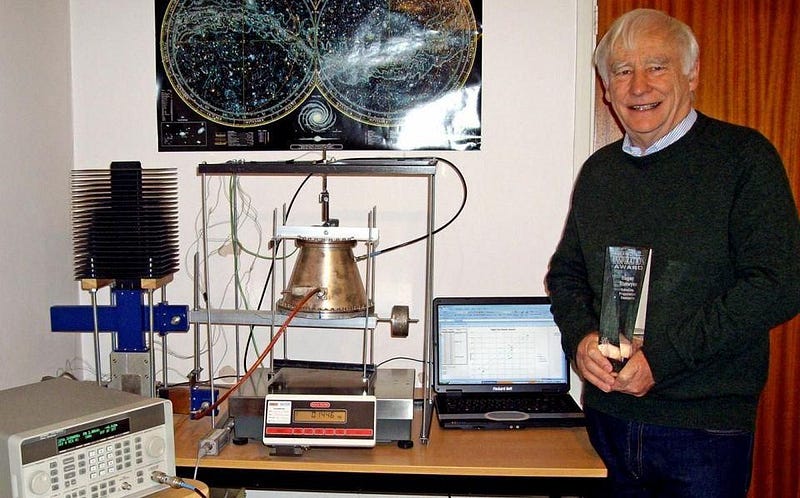
And fooling yourself is quite easy to do! Especially when you, yourself, are the one who believes you have invented something new or revolutionary, you very much want things to go in favor of you having made a new discovery. But that’s exactly why independent confirmation and verification is required as a first step before new, revolutionary ideas are accepted. As Richard Feynman once put it:
For a successful technology, reality must take precedence over public relations, for nature cannot be fooled.
Humans may be easily fooled. But to fool the Universe itself is much more difficult.
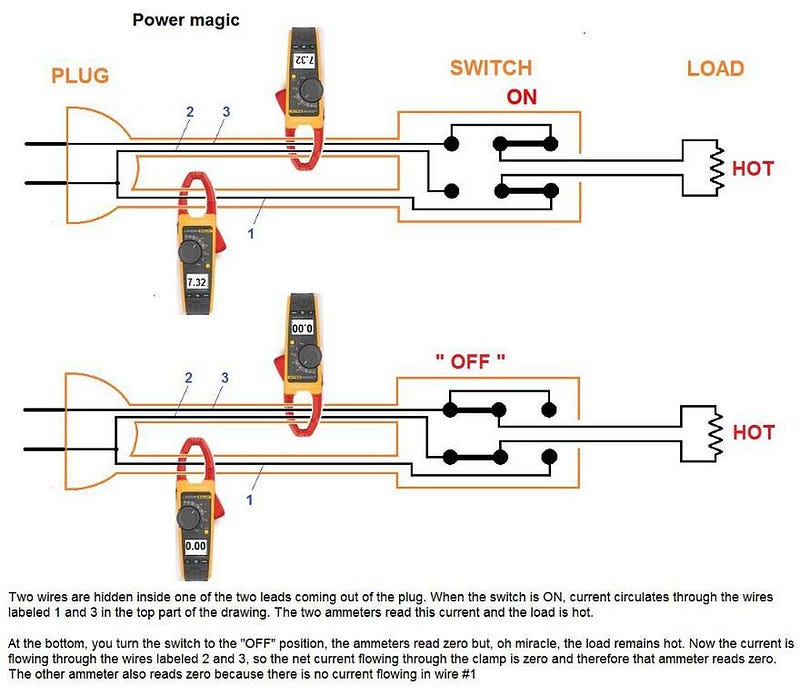
The mystery deepened, however, in 2016, when a NASA team led by wild-idea enthusiast Harold “Sonny” White built their own prototype, tested it, and found that there was, indeed, thrust that they couldn’t explain. As they turned up the power on the device, they saw additional thrust, and no signature at all of any “reaction” to balance out this action. It would mean, if this were correct, a violent overthrow of the laws of physics as we understood them. When you look at the data the team collected and published, it seems like there’s a pretty clear signature of, well, something.
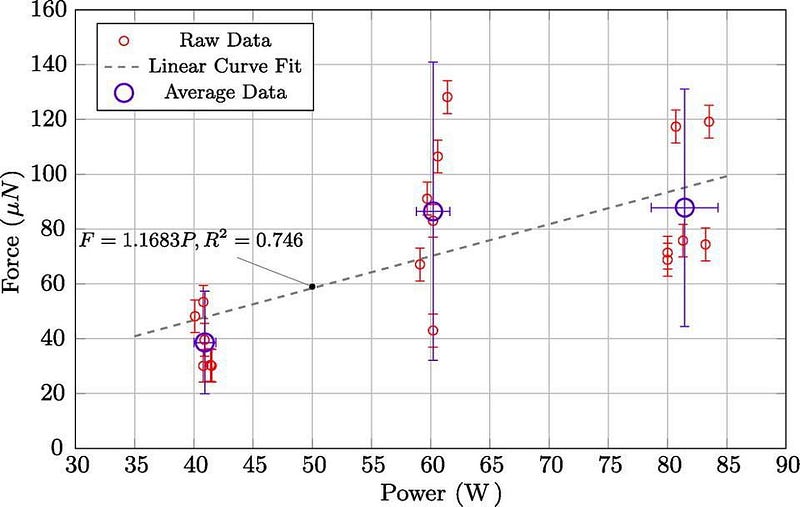
But is that something evidence for new physics? Or were all the experimental teams fooling themselves, Sonny White’s team included? According to a new paper out this week, by a team led by Martin Tajmar, there was one effect that none of the teams accounted for: the magnetic fields produced by the electrical wires feeding the alleged EmDrive.
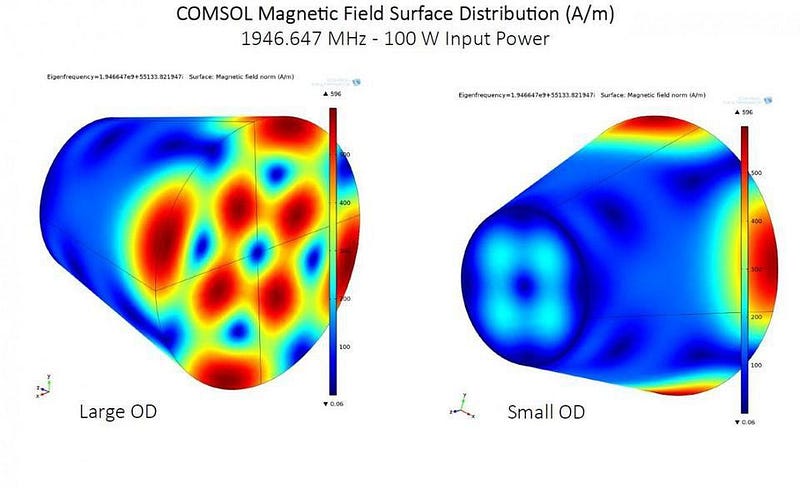
Electric and magnetic fields and forces are tricky, precisely because the electromagnetic fore is so incredibly powerful. Any time you have a moving electric charge, you create a current, which itself creates a magnetic field. Any time a magnetic field changes, it induced an electric field. Since every atom is made up of positive and negative electric charges, it’s inevitable that almost everything can have small electromagnetic field. Even the Earth itself, due to mechanisms in our planet’s core, has its own intrinsic magnetic field. And this is made many times worse when you look at the experimental setups of the EmDrive and EmDrive-like devices, and see all the current-carrying wires leading to-and-from the apparatus.
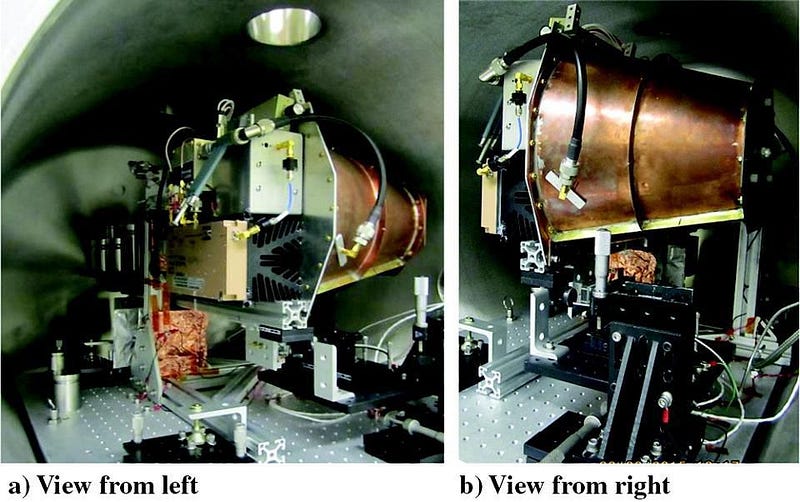
What Tajmar’s team did, for the first time, was create an EmDrive setup that removed this potential systematic error. There are two classes of errors that can arise in experimental physics:
- Statistical errors, where there’s an inherent uncertainty in or randomness to what you’re measuring. Multiple, subsequent measurements will cause this type of error to average out.
- Systematic errors, where your experimental results are inherently biased due to how you’ve set up your experiment. Every measurement you make will be biased in the same fashion.
An unseen systematic was the resolution to the OPERA faster-than-light neutrinos, and it was expected that this would be the resolution to the EmDrive as well, as the other potential explanations were extremely speculative.
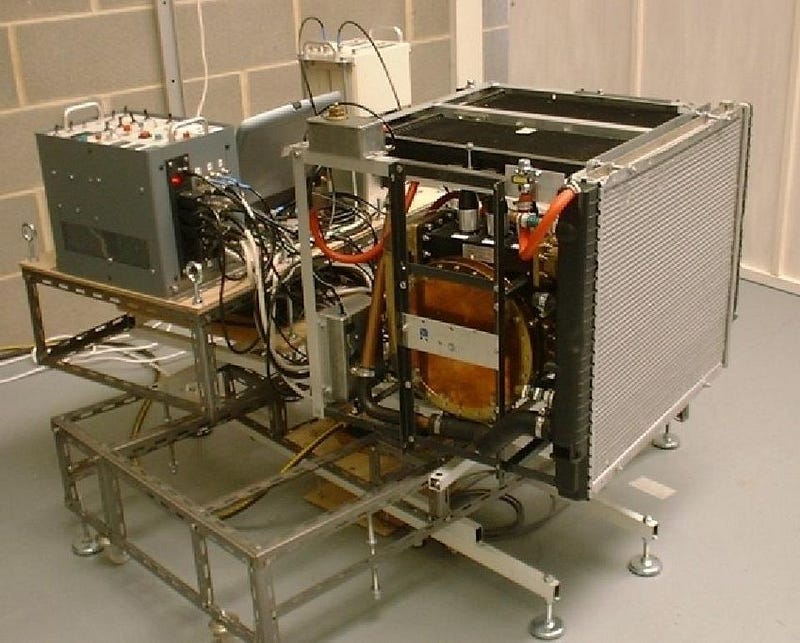
Tajmar’s results are exactly what you’d expect for the systematic error explanation: with a properly shielded apparatus, with no additional electromagnetic fields induced by the wires, there is no observed thrust at any power. They conclude that these induced fields by the electrical wires, visibly present in the other setups, are the likely culprit for the observed, unexplained thrust:
Our results show that the magnetic interaction from not sufficiently shielded cables or thrusters are a major factor that needs to be taken into account for proper µN thrust measurements for these type of devices.
To the best of our knowledge, then, rockets will still require propellant. The EmDrive isn’t a reactionless drive at all, and all the laws of physics should still work. In short, we fooled ourselves.
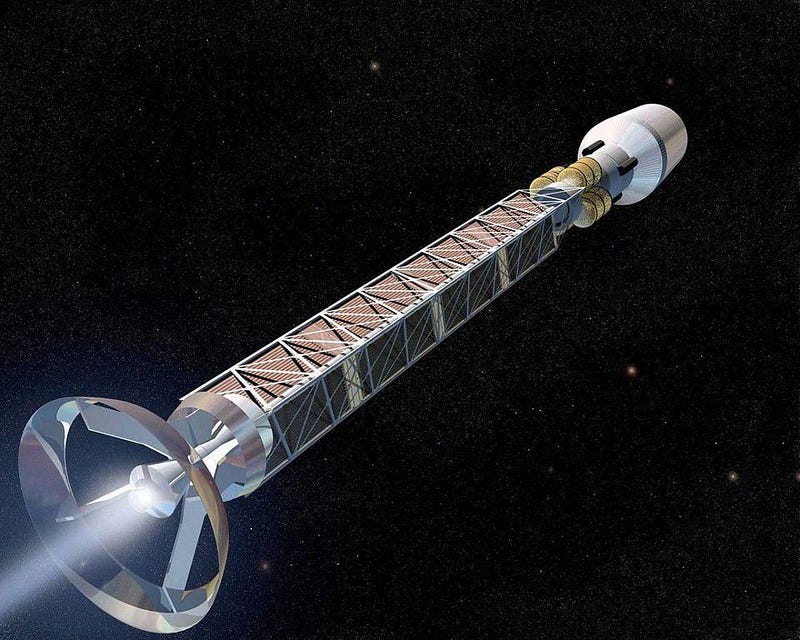
Science never ends, and this paper, as compelling as it is, will surely not be the last word on the topic. Many will continue to research it, build prototypes, and search for thrust signatures without any exhaust: an action without a reaction. It may yet be possible, under some hitherto undiscovered conditions, that the action-reaction law is violated at some level. But the EmDrive probably isn’t it. Pushing against the electromagnetic fields generated by your own electrical wires isn’t a violation of action-reaction, and cannot power a spaceship. The EmDrive was billed as an “impossible” space drive, seeming too good to be true. Verification is always required, as is the complete elimination of systematic errors. As humans, we may be easily fooled, but to fool nature is not so simple. It looks like perpetual motion, as it always has been, is still just an impossible dream of ours.
Ethan Siegel is the author of Beyond the Galaxy and Treknology. You can pre-order his third book, currently in development: the Encyclopaedia Cosmologica.



